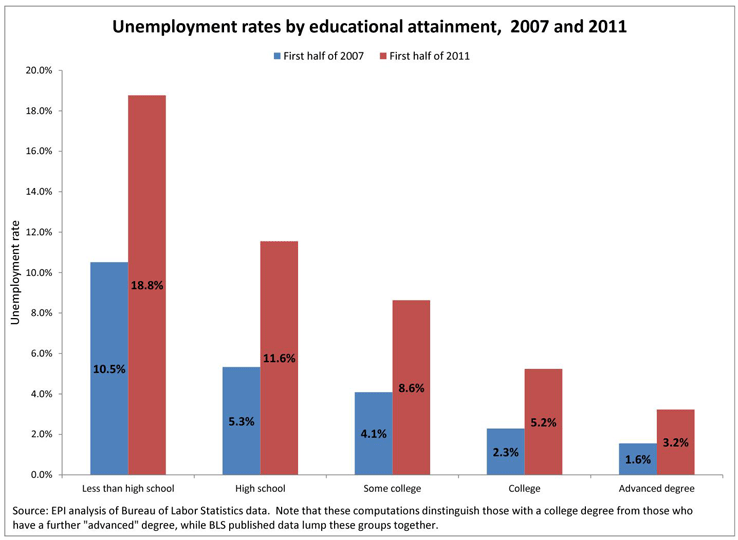The U.S. doesn’t lack the right workers, it lacks work
A common refrain we hear these days is that one of the reasons hiring has not yet picked up substantially is that employers have job openings but can’t find workers with the education and skills they need. Of course, as today’s release of the Job Openings and Labor Turnover Survey shows, unemployed workers outnumber job openings by over four-to-one right now. The amount of unemployed workers vastly outnumbers job openings in every major industry, and there are far fewer job openings in this recovery compared to even the very weak recovery of the early 2000s. Our broad shortfall of demand for workers is beyond question.
However, could there be a skills mismatch for the job openings we do have? An important thing to note in this discussion is that while there are always changes going on in any labor market that will create some degree of mismatch between the workers who are available and the workers employers need, the relevant question is whether this mismatch is contributing a substantial part of today’s unemployment.
It is true that workers with higher levels of education have much lower unemployment rates than workers with lower levels of education. Could this signify an unmet demand for workers with high levels of education — a mismatch, given the excess supply of workers with lower levels of education — that is fueling our persistent high unemployment? The figure below shows unemployment in the first half of 2007 (before the recession began) and in the first half of 2011, by education level. It shows that while workers with higher levels of education do have substantially lower unemployment rates, these workers too have seen a large percentage increase in unemployment since before the recession started. In fact, all education categories have seen their unemployment rates roughly double over the last four years.

This across-the-board deterioration in the demand for workers runs directly counter to the notion that there has been some transformation of the workplace over the last four years that has left millions of workers inadequately prepared for the currently available jobs. The fact that productivity growth over this downturn has been comparable to that of the early 1990s downturn and far less than that of the early 2000s downturn (see Figure L here) provides further evidence that no major workplace transformation has occurred.
For more on the issue of structural unemployment, see Reasons for Skepticism About Structural Unemployment.
Enjoyed this post?
Sign up for EPI's newsletter so you never miss our research and insights on ways to make the economy work better for everyone.